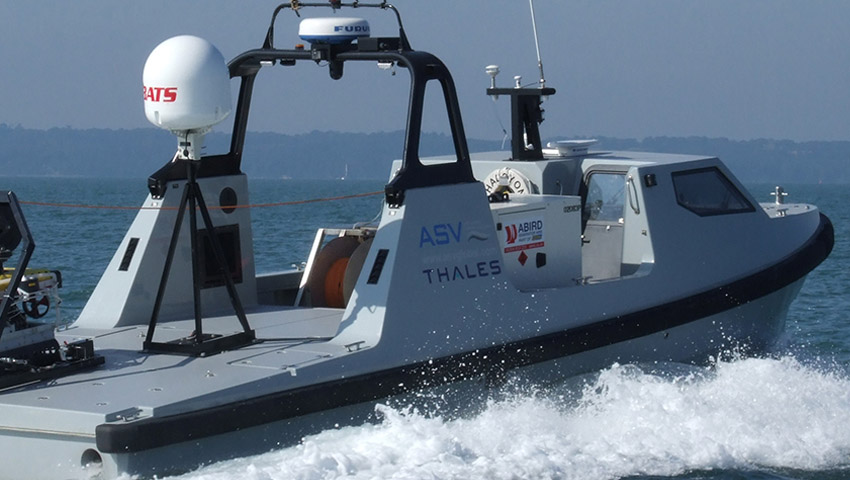Thales, in partnership with L3Harris, has successfully demonstrated the growing capability of unmanned surface vehicles (USV) to support maritime security operations with the Royal Navy and French Navy.
To continue reading the rest of this article, please log in.
Create free account to get unlimited news articles and more!
Inexpensive and easy to deploy, mines – which can be improvised by hostile forces – are a growing menace. Until now, clearing them has been a personnel intensive and slow and dangerous process, even with four ships on permanent deployment.
But Thales is working with L3Harris under the terms of a recently signed memorandum of understanding to create unmanned surface vehicles (USV) to counter the threat safely and quickly.
Thales and L3Harris (formerly known as ASV) have a long-standing partnership that began in 2012 with the design, build and commissioning of the Halcyon USV. The versatile 11-metre USV served as a platform to test and develop new concepts of autonomous operation.
L3Harris is a good fit for Thales because of its record in building a variety of USV systems for military, security and offshore energy applications.
The history of the partnership and this new agreement give a great foundation for developing future market-leading capabilities while supporting Thales’ model of forming close partnerships across industry, SMEs and academia.
Together, Thales and L3Harris have developed a new class of USV. The first of their kind, Artemis and Apollo represent an important step towards the next generation of MCM technology.
These first two of these USVs will enter service with the Royal Navy and France’s Marine Nationale in 2020. The culmination of 4,000 hours of trials over a period of four years, the boats are equipped with a powerful autonomy engine and our Towed Synthetic Aperture Sonar, which work in unison to detect, classify and locate mines.
Live data and images are streamed to a control centre, which can be many kilometres distant, either on a ship or quayside. When a mine is located, the USV can be equipped to deploy a remotely operated vehicle, which is used to neutralise the threat through assured and accredited communications channels.
These particular boats, which are being built to our custom design, are the heart for a system of systems that provides a world-leading unmanned MCM capability at a distance and without the risk of sending divers down into harm's way.
With the ability to build, equip and control USVs has been fully tested over thousands of hours, we expect it to migrate to other fields such as unmanned anti-submarine warfare, fisheries protection, coastal surveillance and anti-smuggling operations, to name a few.
The Thales media release stated, "Some of these may require a different platform or configuration, of course, but the capability has been proven. There is no reason why the technology can’t migrate into new markets and we’re open to approaches from interested parties."
Both Australia and the UK share similar maritime operating environments, with as much as 95 per cent of UK trade, including about half of all our food and fuel, reaches us through the sea. Put another way, that’s goods to the value of well over £500 billion ($1 trillion) every year.
"Keeping maritime trade safe, when the majority of it passes through just a handful of chokepoints, is a constant task for the British Royal Navy and her allies," the Thales release said.
Stephen Kuper
Steve has an extensive career across government, defence industry and advocacy, having previously worked for cabinet ministers at both Federal and State levels.

 Login
Login








